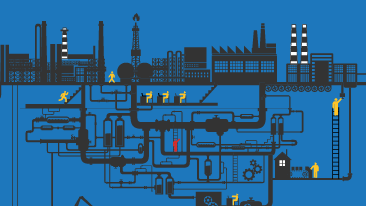Managing information as it moves from conceptual design through front-end engineering is a challenge for most engineering, procurement and construction companies (EPCs). As projects pass through the phase gates from one stage to the next, information gets lost.
One EPC may develop the front-end engineering design (FEED) package while several EPCs may be involved during the execution phase. Various departments may use tools that don’t integrate with one another. Information is stored in disparate methods and formats, requiring manual reentry and making it difficult to reconcile as plans change. Compounding the challenge, the volume of information increases as a project moves from conceptual engineering to FEED — at each stage, you’re adding more detail.
Streamlining engineering workflows with tools that share information provides EPCs an opportunity to improve accuracy and productivity, while creating both CAPEX and OPEX savings as well. Shifting from the document-centric status quo to a collaborative, data-centric model allows projects to stay on track as they progress and incorporate more detail and complex information. AspenTech’s Performance Engineering solution enables this data-centric approach, while maintaining the hierarchies and connectivity EPCs need to collaborate effectively.
As an example, once engineers develop and lock the conceptual design and a project moves from conceptual design to FEED, more factors come into play: equipment design, economics, safety, reliability and risk. Sometimes, process engineers may want to reuse data partially or fully, revisiting the design from a previous project.
Each of these considerations calls for input from different experts — and any change to one part of the project can have a cascading effect on other pieces. Bringing all of these together through a performance engineering platform ensures EPCs can move quickly, designing across multiple dimensions simultaneously while keeping options simple — and accurate — for each user.
Sharing data across teams from conceptual design through front end design allows EPCs to produce more than just the best possible FEED deliverable. Ultimately, Performance Engineering supports digital information flow across the full asset lifecycle, from FEED and detailed design including cost estimation and controls, into the systems that operate and maintain the plant — offering as much as a 30% gain in efficiency.
Learn more in the white paper “Optimize Asset Design and Operations With Performance Engineering.”





Leave A Comment